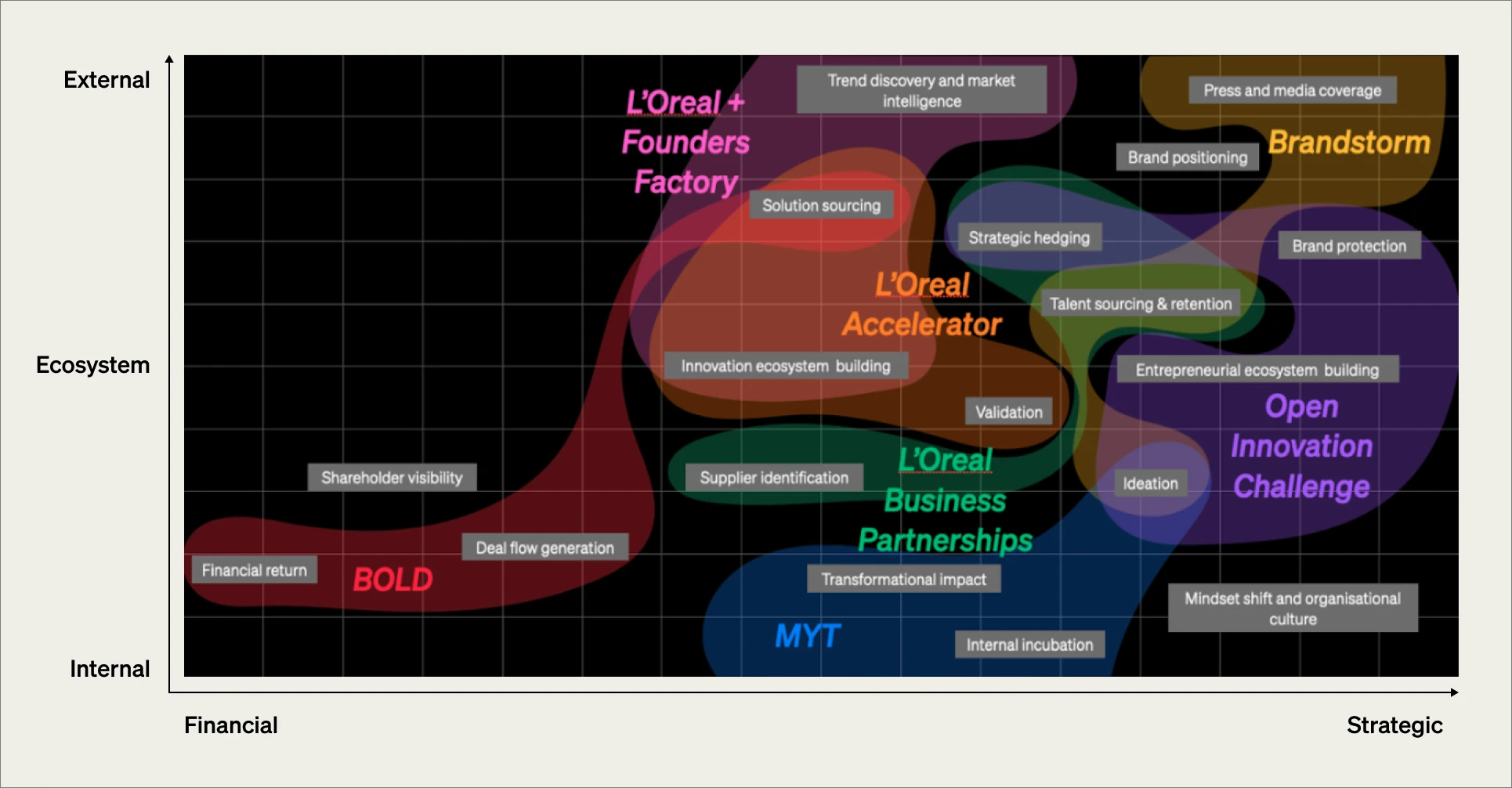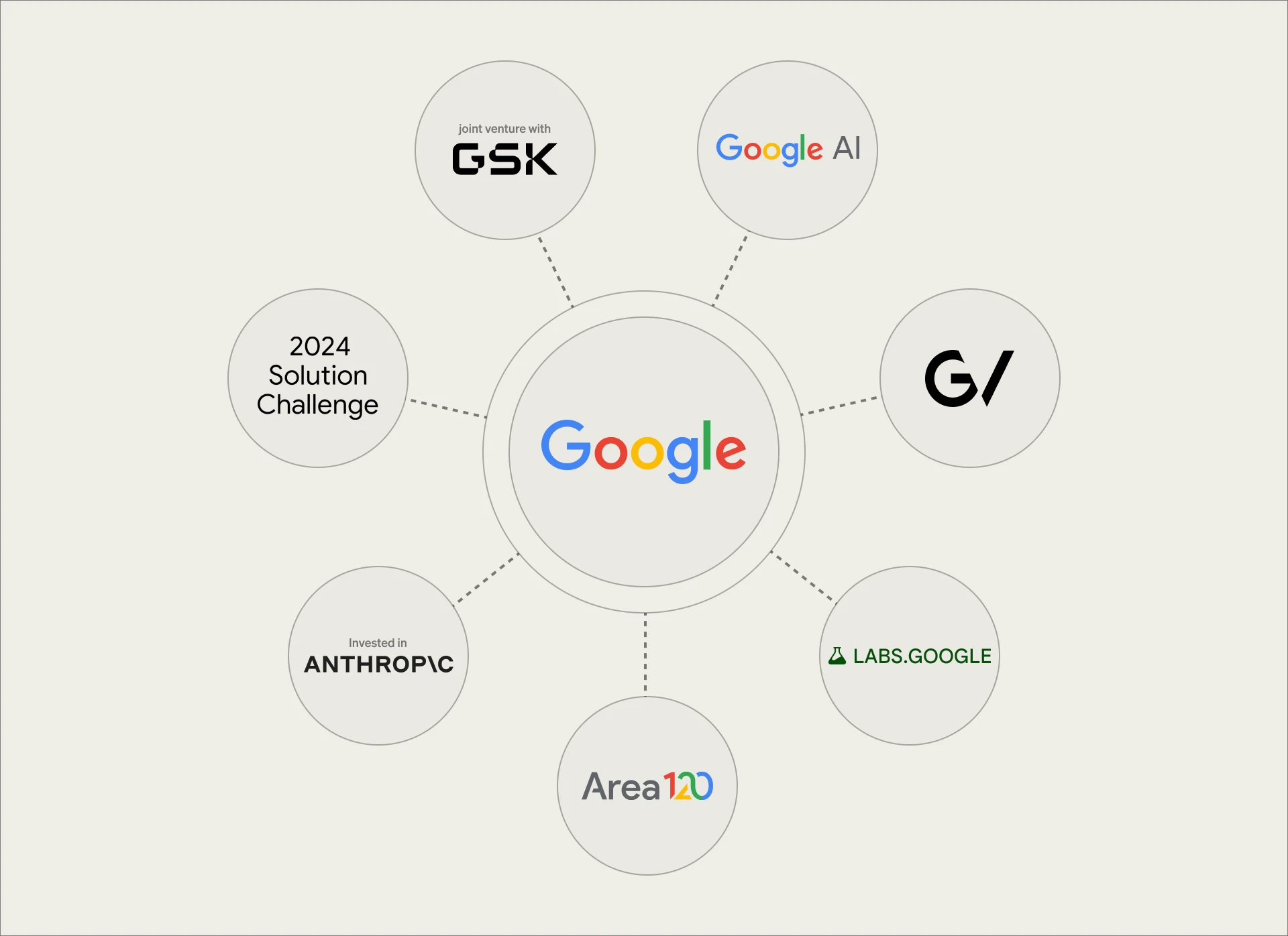Key takeaways
The concept behind corporate innovation ecosystems isn’t new. It dates back to 2004 when Charles W. Wessner pointed out that innovation can’t happen in a vacuum. Instead, it relies on the combined efforts of different players, including corporations, employees, startups, universities, research institutions and governments.
Ecosystems fuel innovation by creating environments where collaborations flourish, enabling companies to tap into a vast external pool of expertise, ideas, and technologies—all with the speed and efficiency needed to thrive in today’s fast-moving and ever-evolving landscape.
Global enterprises like Bosch, Microsoft, Google and many others have embraced the model with stellar results — tapping into diverse talent pools, accessing cutting-edge technologies, and fostering a culture of open innovation that drives sustainable growth in today’s increasingly competitive and complex global market.
Ready to find out more about corporate Innovation ecosystems, how they work and how they create value? Let’s kick things off with some context.
What is a corporate Innovation ecosystem?
A corporate innovation ecosystem is a collaborative network of internal and external entities that work together to generate new technologies, ideas and business models. The goal? To cultivate a culture of innovation that can future-proof the parent company and equip it to compete and thrive in rapidly changing markets. The entities that typically make up an innovation ecosystem include:
- Corporate venture capital (CVC) arms: Investment units within larger corporations that provide funding to external startups with strategic value.
- Startups and scaleups: Collaborations between corporates and younger, smaller companies to leverage mutual strengths for growth and market expansion.
- Incubators and accelerators: Programs that support early-stage startups by providing resources, mentorship, and funding to help them develop and scale their business ideas.
- Innovation labs: Dedicated units within companies focused on developing new products, services, or technologies through experimental and innovative approaches.
- Universities and research institutions: Collaborative agreements with academic and research entities to access cutting-edge expertise and technologies for mutual benefit.
- Other corporations: Partnerships between companies aimed at leveraging each other’s capabilities to drive joint innovation and address complex challenges.
Creating an ecosystem with other players, both large and small, enables corporations to enhance their knowledge, talent and capabilities in ways that are simply not available to a single organisation operating independently.
Example:
Over the years, L'Oréal has built an intricate ecosystem of partners, startups, innovators, employees and other stakeholders to boost its competitive edge and spearhead technological innovation. Here’s what it looks like today:

How do corporate Innovation ecosystems work?
Corporate innovation ecosystems operate on the principle of open innovation, which involves leveraging both internal and external ideas, knowledge, and technologies to drive innovation and create value. Here are some of the elements that make ecosystems so effective and fueling growth:
- Internal R&D: Fostering innovation internally and encouraging collaboration across different departments, e.g. marketing and operations.
- External partnerships: Collaborating with startups, academic institutions, and research labs introduces new technologies and methodologies to the corporation through investments, acquisitions, joint ventures, or projects.
- Innovation vehicles: Many companies establish or partner with innovation hubs, incubators and accelerators to nurture startups that may yield beneficial technologies or business models. Scouting and Ventures: Companies often have dedicated teams to scout for emerging technologies and potentially disruptive startups. Investing in these ventures allows the company to stay ahead of technological advancements and market trends.
What are the benefits of having a corporate venturing ecosystem?
We’ve already touched on some of the benefits of being part of a corporate innovation ecosystem above, but here’s a more specific list:
Access to external ideas and resources
An innovation ecosystem brings together diverse perspectives and expertise, which can lead to more creative solutions and breakthroughs in products and services. These can include research findings, specialised knowledge, technologies and top-tier talent, just to name a few.
Speed to market
By collaborating with external entities that already possess solutions or by accelerating the development of internal ideas using external resources, companies can significantly reduce the time required to bring innovations to market—a valuable competitive edge in today’s market.
Reduced risk and costs
Sharing the risks of innovation with external partners can make it easier for companies to invest in unproven technologies and markets. This can lead to groundbreaking innovations without bearing all the costs and risks internally.
Access to market opportunities
Innovation ecosystems serve as gateways to untapped opportunities. By collaborating with other ecosystem participants, organisations can tap into new customer segments, enter new markets, and explore new business models. This can help organisations expand their reach and increase their competitiveness.
A more entrepreneurial culture
Engaging with external and internal entities in innovative endeavours can help foster a culture of continuous learning and adaptation within the company. This cultural shift can make the organisation more agile and better prepared to respond to changing market conditions.
A real-world example: Google’s innovation ecosystem

To give you a better idea of how real-world corporate innovation ecosystems work, let's take a look at some of the initiatives, entities and innovation vehicles that make up Google’s thriving ecosystem:
R&D/tech labs
R&D/Tech Labs are specialised facilities where new technologies and ideas are developed and tested.
Example:
Google has quite a few research labs. Google AI, for instance, focuses on pushing the boundaries of artificial intelligence.
CVC Funds
Through Corporate Venture Capital Funds, corporations can invest in promising startups, gaining insights into their disruptive ideas or technologies.
Example:
Google Ventures (GV) is Google’s CVC fund, backing cutting-edge startups in fields like life sciences, healthcare, artificial intelligence, robotics, transportation, and more.
Incubators and accelerators
These programs offer resources, mentoring, and support to startups, helping them grow and develop their ideas. By nurturing early-stage companies, corporations can get first access to the next big thing in the industry.
Example:
Google Labs is an incubator where new ideas can be tested with real users. Google for Startups is a global accelerator that offers a wide variety of programs to help startups grow and scale.
Intrapreneurship programs
Sometimes, the most groundbreaking solutions emerge from within the organisation. By promoting intrapreneurship, companies encourage employees to think like entrepreneurs, fostering a culture where everyone feels empowered to innovate.
Example:
Google’s Area 120 enables employees to work on experimental projects and turn their ideas into live ventures.
Startup partners
Startup partners provide corporations with rapid access to new technologies, business models, and offerings significantly faster than developing these solutions internally.
Example:
In 2023, Google invested over $2B in Anthropic, the AI company behind ChatGPT rival Claude. Partnering with Anthropic is helping Google boost its AI technologies, potentially opening up new markets.
Challenges
Challenges and hackathons are often organised in a competitive format. These events not only spotlight innovation but also foster collaboration, where both startups and corporations can benefit from shared insights and ideas.
Example:
Google’s Solution Challenge 2024 is a competition to create solutions that address one or more of the United Nations' 17 Sustainable Development Goals using Google's technologies. This challenge encourages participants to tackle global issues like poverty, environmental sustainability, and economic growth.
Joint ventures
This is a collaboration where each party contributes to the co-creation of solutions that benefit both entities.
Example:
In 2016, Google’s life sciences unit, Verily, entered into a joint venture agreement with GlaxoSmithKline (GSK) to develop bioelectric medicines. The project aimed to create miniature electronic implants that treat various conditions, including asthma and diabetes.
Other components that can be found in ecosystems include innovation hubs, M&A teams, university and government collaborations, venture client units and spin-offs.
Final thoughts
When implemented the right way, corporate innovation ecosystems can unlock unprecedented growth quickly and provide a valuable competitive edge for companies navigating today’s uncertain landscape. They enable companies to tap into a wide external pool of capabilities, talent, expertise, knowledge and technologies to future-proof their business with speed and reduced risk.
If you’re thinking of starting your own ecosystem, be sure to check out our report: Building a Corporate Innovation Ecosystem, for a systematic, actionable methodology to help guide your journey.
___
Want to build your own venturing ecosystem? We can help you create a tailored partnership strategy that leverages your unique assets to fuel profitable growth, tap into new markets and build cutting-edge businesses at scale.
25 Innovation Program Examples
Find out how P&G, LVMH, LG and more build custom innovation programs to drive growth, test ideas, and unlock new markets.









